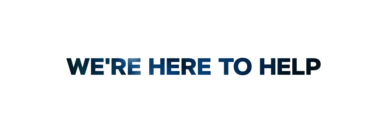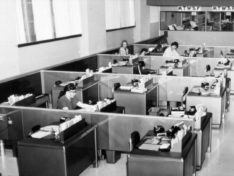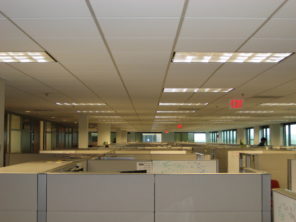
The Remote Work Revolution Is Here, Are You Ready?
By CMD Technology Group
4 min read
In the Late 19th-century, the United States’ industrial work expanded exponentially. Mechanization quickly revolutionized the workforce and the way people worked. Machines replaced highly skilled craftspeople, reducing labor costs and lowered prices of consumer goods.
Fast-forward half a century. In the aftermath of World War II, the workplace underwent another radical shift. The workforce now included many women, filling in for the men at war. Factory jobs were paying far more for unskilled labor than office jobs were, so employers had to make office work more attractive.
Soon it was discovered that people restricted to their desks doing repetitive tasks became fatigued before the end of the day. Breaks and more varied work were introduced. Coworkers were seen as opportunities to work with rather than alongside and instead of becoming less productive as some feared, workforce productivity increased.
In the decades following the 1960s, advances in technology further changed the office landscape. Function rather than form was paramount. By the 1990s the workplace became “lean and mean.” Businesses opted for smaller and less private spaces in favor of more powerful, versatile technology. Walls tumbled down, and cubicle mazes sprang up.
“Cubicle Land”
And that brings us to today. After nearly a century of raising the status of the office, the next workplace revolution has begun, and it has heralded the abandonment of the office in favor of home or the corner coffee shop. As before technology is driving this shift, and it’s more important than ever for business leaders to adopt new methods of work to stay competitive, agile and secure in this changing landscape. A significant component in successfully achieving this lies in selecting the right technology that supports your workforce satisfaction and productivity.
The New Workplace Landscape
In truth, the remote work revolution has been gaining traction for some time. Regular remote work, among the non-self-employed population, has grown by 140% since 2005, nearly 10x faster than the rest of the workfore or the self-employed, according to data from Globalworkplaceanalytics.com. That’s 4.3 million employees (3.2% of the workforce) working from home at least half the time.

Workers today, expect their workplace to be as adaptable and dynamic as they are, with mobile devices, virtual meetings, and cloud-based services, and the competition for skilled and talented workers keeps intensifying. So this raises serious questions for business decision makers.
- What effect does remote work have on productivity?
- How can we support remote work initiatives and effectively manage devices and applications?
- How do we address increased security risks?
Citrix has developed incredible tools that address those concerns and opens the door to new and fantastic possibilities for organizations willing to take the next step in their business journey.
37% of employees say they would change jobs for one that offered them the ability to work where they want at least part of the time.
New Challenges
When your workforce is tapping into their most productive hours, they shouldn’t be interrupted with productivity speed bumps. For example, think of the bad habits that develop and the frustration employees experience when they have too many user names and passwords to remember. IT teams also face additional complexity and difficulty managing users’ global access when multiple credentials are in play. All around this alone can hurt productivity and incur extra expense (Nor is it solely a remote work issue).
Employee workflows are often beset by fragmentation, such as using multiple applications to complete a single process, creating redundant processes, or being restricted to a single device. Then there is the continuity of the user experience. Cloud applications are often optimized for different browsers, devices, or operating systems. This presents a big challenge for IT teams to solve issues when they arise, which usually comes down to limited choice for employees when choosing devices or applications.
Citrix Workspace
Unlike the traditional workspace we experienced just 20 years ago, the digital workspace always serves up the right experience at the right time, giving employees the consistent experience they need to be productive (It also significantly streamlines IT’s workload and staff requirements).
Single sign-on:
SSO lets users sign in once to access all their SaaS (Software as a service. Think Office 365), web, or virtual applications. It also permits IT to grant and revoke global employee access during onboarding or termination.
Integrated workflows:
Provide logical integration between applications, as well as a stateful application environment for employees to work. Consistent user experience: Ensure that no matter what application is paired with what device, the experience is consistent, the performance rivals native, and the application functionality is automatically adapted to device features.
Contextual access and security controls:
IT can contextually apply security and rights, based on devices, networks, locations, and user behavior. With more granular insights, IT can grant user access (or partial access) to approved devices, the security posture of devices, and user locations. That way, IT can be confident about maintaining a security posture while providing users with the best possible access to their workspace.
Through Citrix Workspace CMD Technology Group has helped many organizations transform their business into lean and agile players in their industry by embracing mobility. Users can access all their apps from a single app store, with a consistent experience across all their devices, from wherever they may be located. Plus, it’s easy for IT to apply uniform policies across all types of apps, reducing IT administration and management time.
After the Revolution
Your organizations’ work landscape, communication, and direction will inevitably change as the remote work revolution matures and continues to evolve. Rather than force the same processes to work forever, think about how and when you can innovate your workforce through new experiences, technology, or structure. Don’t get left behind in the margins of history! Chance is, you have burning questions that apply specifically to your industry, company culture or technological capabilities. What then? Give us a call or send us an email.
You can email Annabelle at afernandez@cmdtg.com. She’ll happily put you on a path to resolution. (1-800-806-4173)
We’re always ready to answer your questions, without any sort of obligation on your part. At CMD Technology Group, we don’t take trusted relationships with our partners for granted, and a true partnership with your IT team is what we want to build.
We can help empower everyone in your company to embrace innovative change and encourage them to thrive. It is, after all, the key to your success.

If you have a question about any of our solutions or any feedback you’d like to share, contact us. We would love to hear from you!



